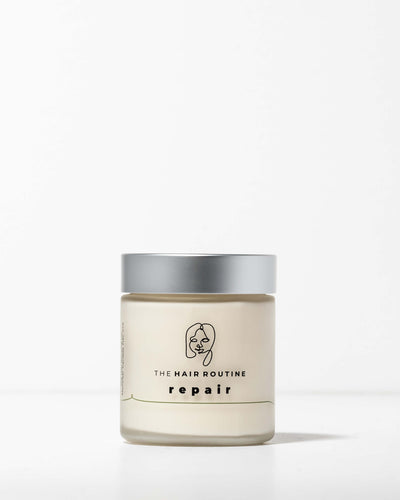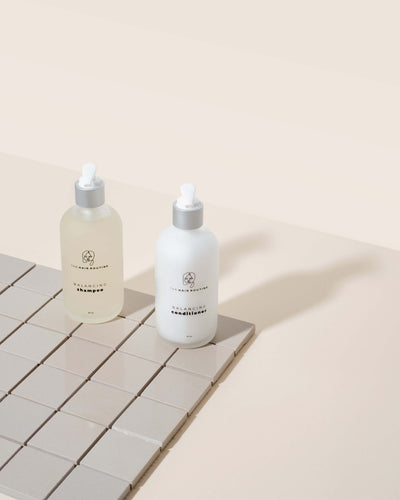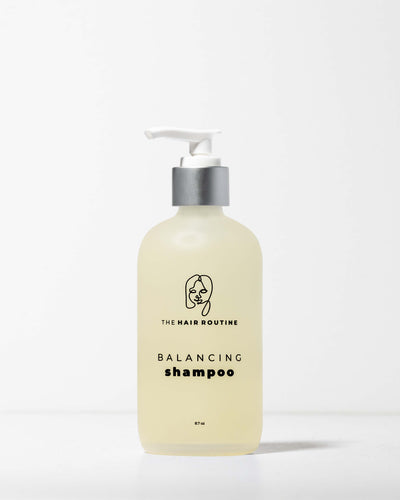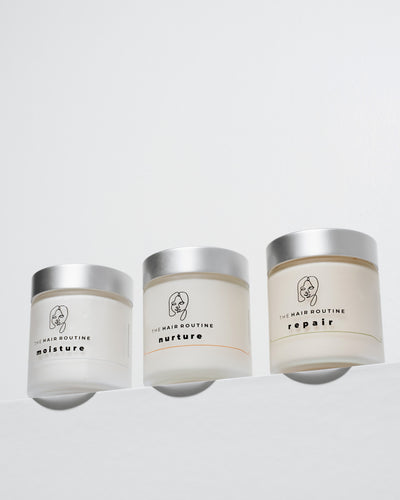7 Ways to Prevent Split Ends
What you’ll learn:
- Why do split ends appear?
- How to prevent getting split ends?
- Following a hair care routine
Dealing with split ends is one of the most common long-hair problems. Many find an immediate solution in cutting them off everytime one appears. But in the long run, this is not a sustainable solution to deal with split ends if you’re looking to grow your hair longer.
Why do split ends appear?
The hair structure consists of three layers: the cuticle which protects the hair, then the middle layer is the cortex, and finally the innermost layer is the medulla. Split ends, or trichoptilosis, is a type of hair damage that occurs when the cuticle is not strong enough and breaks the strand into two or more branches. When hair goes through a lot of stress -such as chemical processes or heat styling- the cuticle becomes weak, leaving the rest of the hair structure unprotected. Without that protection, the inner layers rip and form split ends. This usually happens at the end of the strand, though it could happen anywhere along it.
Learn about the different types of split ends
How to prevent getting split ends?
Avoiding any kind of chemical process is the easiest way to keep the cuticle healthy, but there are a few other solutions that will definitely keep those ends healthy as can be.

1. Moisturize your hair at least once a week
A moisturizing treatment helps replenish the hair structure with water so that the hair is ready to receive and store all the required nutrients to be strong. Ingredients such as vitamin A, aloe vera, and pro-vitamin B5 hydrate and restore the hair fiber. The Hair Routine Moisture Treatment includes moisture locking ingredients such as glacial water, sucrose, pro-vitamin B5, meadowfoam seed, sweet almond, grapeseed, olive, and coconut oils.
2. Treat it while you sleep
Like skin, hair regenerates the most while sleeping. Oils that have unsaturated fatty acids -for best absorption- will treat the hair better as you get some rest. Apply a couple of drops of olive or argan oil before you sleep and wash it off with warm water the next morning. Additionally, consider the advantages of using a silk pillowcase: it reduces tangling which results in less hair damage!
3. Use protection
Protecting the strands from heat is extremely important and generally underrated. High levels of heat or prolonged heat have a direct effect on the hair structure at a molecular level and the damage caused to the hair is cumulative as there are no growing cells in hair. A layer of protection can go a long way. Heat protectors have proven to dramatically reduce damage at the surface of the hair strand by preventing the cuticles from raising and creating extra friction. Apply it on your clean hair and wait for it to fully dry before you use a straightener or curler; this will help lock in the moisture. Use grapeseed oil as an alternative natural hair protectant.
4. Use a protein treatment
Restore the hair mass with products that are rich in protein such as keratin and collagen. Other great ingredients to look out for include amino acids such as arginine, serine, and proline. This Repair Treatment is fully plant-based and made with regenerative ingredients like oats, wheat, and soy protein that will make the hair stronger, fuller, and healthier.
5. Improve your hair care habits
Brushing your hair daily to spread the natural oils from the scalp to the ends will keep them well nurtured. When you brush, be gentle and do so by starting from the ends, working your way through the knots slowly until you can brush it smoothly without struggling. Add a few drops of adsorbent oils such as grapeseed oil, to keep it smooth and shiny.
6. Get a trim before it’s too late
Apart from making all of these points part of your daily hair care routine, avoid spending more than 6 months without getting a trim. The longer the hair strand grows the thinner it gets at the ends, and the easier it breaks. Cutting it before it’s too thin will significantly improve the overall health of your hair.
7. Follow a hair care routine
Hair only needs three elements to be healthy: water, oil and protein. These elements are lost because of daily styling, handling, pollution, stress, etc. Making sure your hair is in perfect balance is easy if you know what it needs. Complete this test and find out what your hair needs, why, and how often. Having a Hair Routine molded to your needs is the best way to treat and avoid further -or any- breakage.






